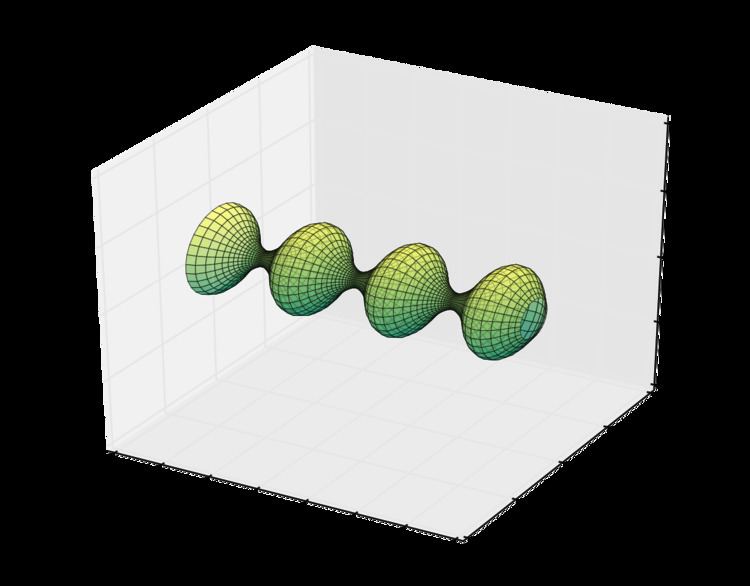 | ||
In geometry, an unduloid, or onduloid, is a surface with constant nonzero mean curvature obtained as a surface of revolution of an elliptic catenary: that is, by rolling an ellipse along a fixed line, tracing the focus, and revolving the resulting curve around the line. In 1841 Delaunay proved that the only surfaces of revolution with constant mean curvature were the surfaces obtained by rotating the roulettes of the conics. These are the plane, cylinder, sphere, the catenoid, the unduloid and nodoid.
Contents
Formula
Let
Given these variables,
The formula for the surface of revolution that is the unduloid is then
Properties
One interesting property of the unduloid is that the mean curvature is constant. In fact, the mean curvature across the entire surface is always the reciprocal of twice the major axis length: 1/(2a).
Also, geodesics on an unduloid obey the Clairaut relation, and their behavior is therefore predictable.
